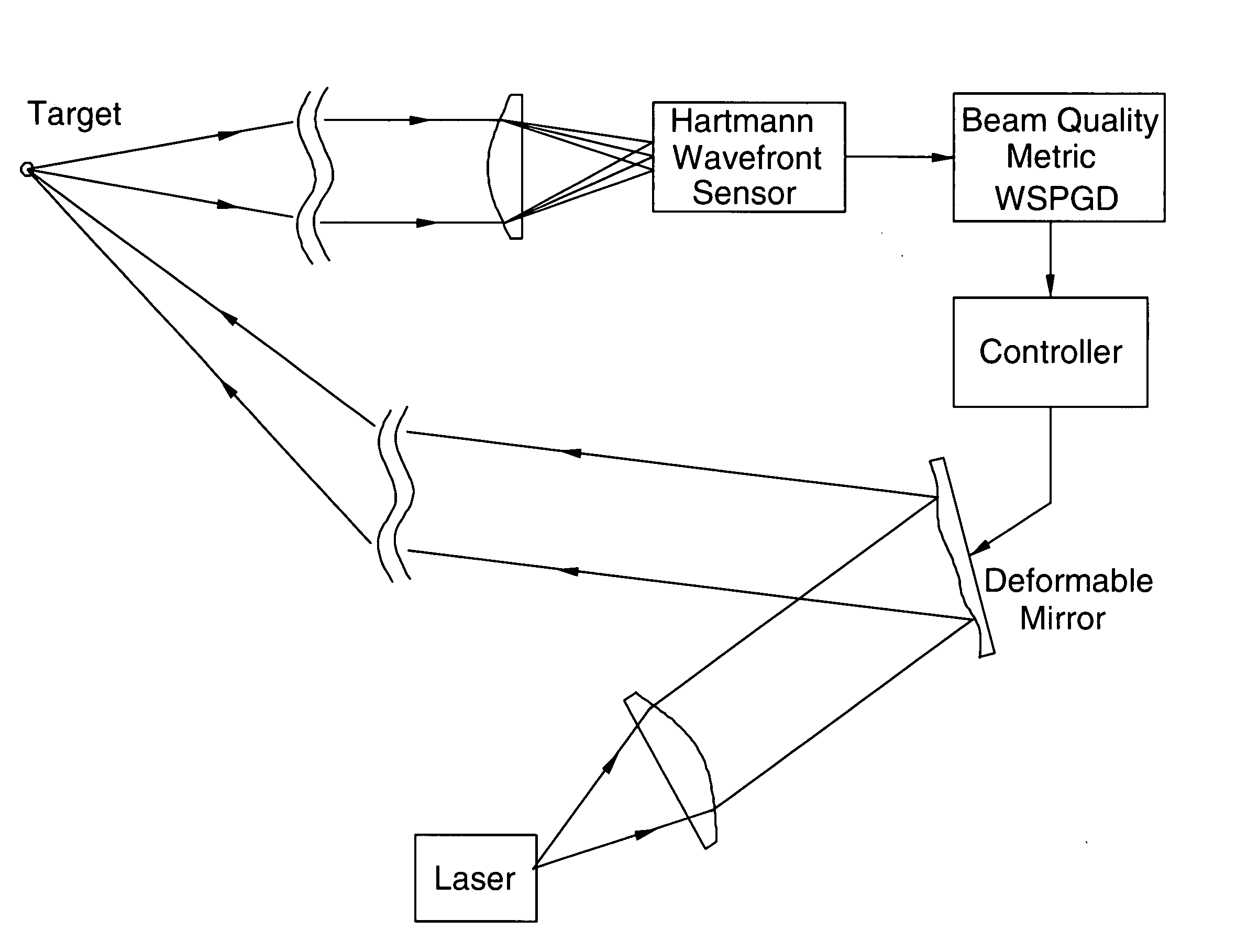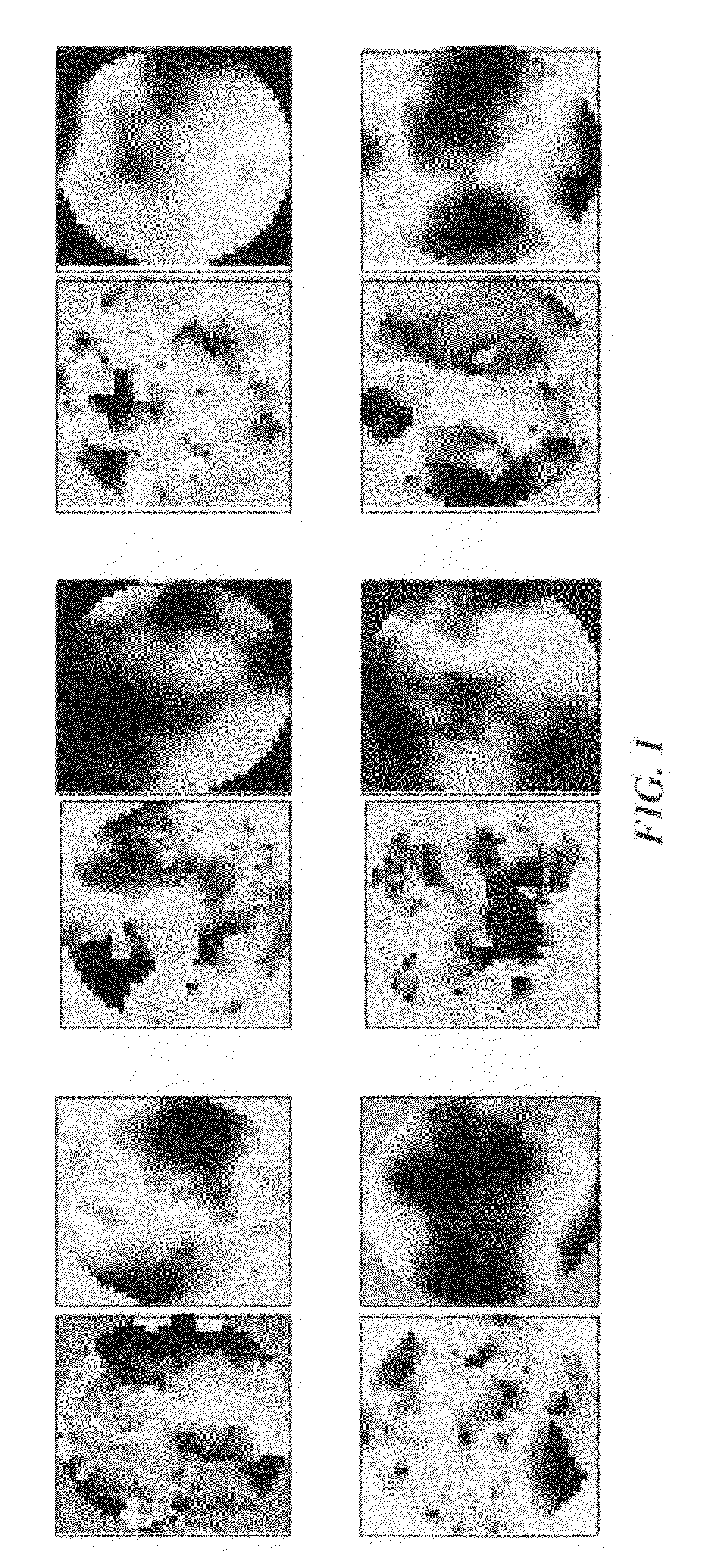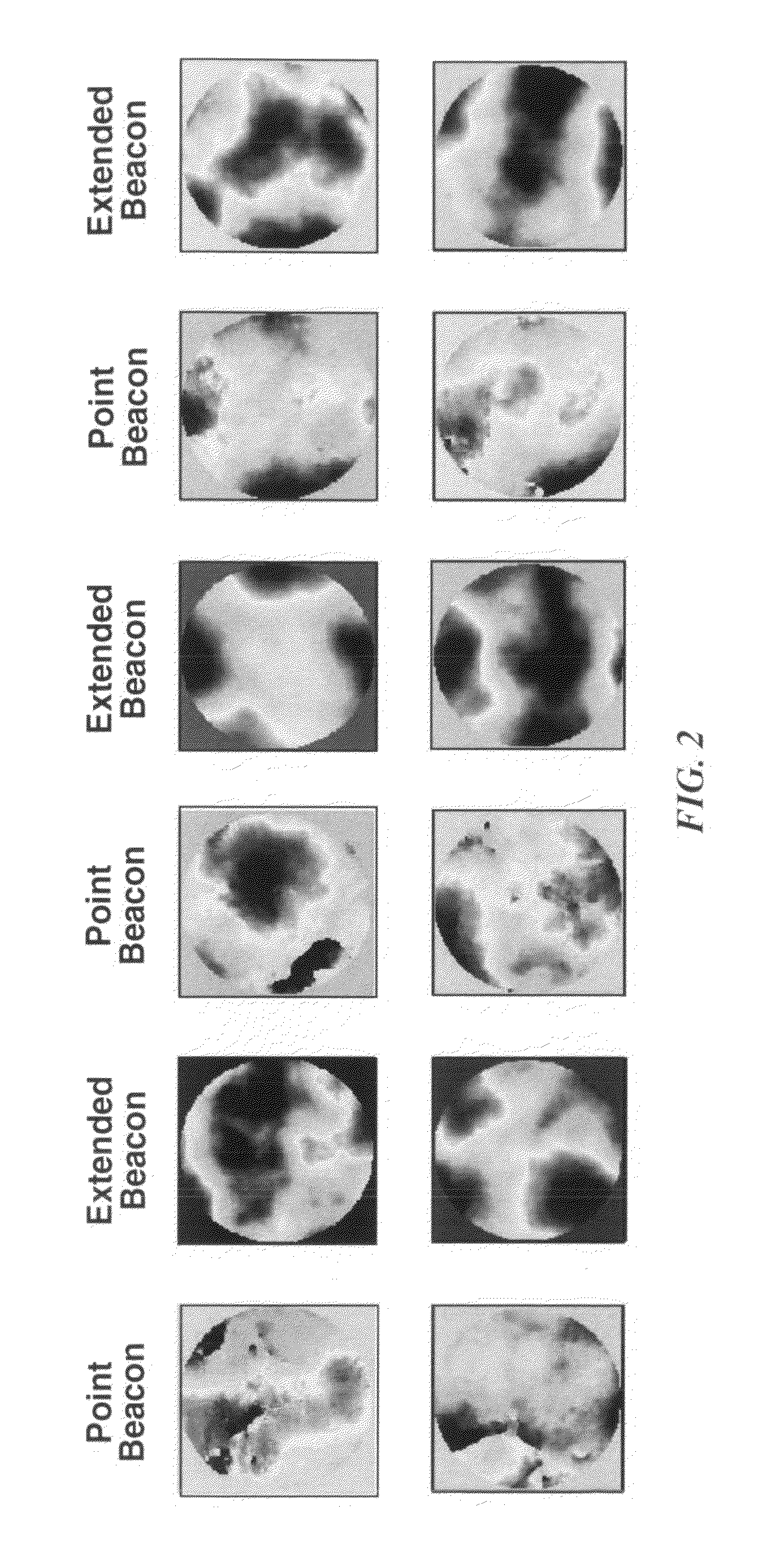Beaconless adaptive optics system
a beamless adaptive and optics technology, applied in the field of beamless adaptive optics systems, can solve the problems of reducing the flux to harmless levels, not providing a light source that could serve as a beam, and other in line light sources may not be available, and achieve the effect of high speed control
- Summary
- Abstract
- Description
- Claims
- Application Information
AI Technical Summary
Benefits of technology
Problems solved by technology
Method used
Image
Examples
Embodiment Construction
[0033]A first preferred embodiment of the present invention provides a beam control approach somewhat similar to the approached pioneered by M. Vorontsov and others that is discussed in the background section of this specification. Applicants have introduced a concept of a Wavefront-based Stochastic Parallel Gradient Decent (WSPGD) adaptive optics system, which uses off-axis wavefront measurements of laser return to provide feedback for an optimization algorithm. Applicants have validated this concept in simulation using a wave-optics code. The WSPGD adaptive optics system concept is based on three findings:[0034]the phase aberrations of laser return from the target contain information about beam spot size at the target;[0035]the variance of differential local wavefront tilt depends inversely proportional on beam spot size at the target; and[0036]correction of a limited number of low-order Zernike modes significantly increases on-axis intensity and power in the bucket at the target....
PUM
 Login to View More
Login to View More Abstract
Description
Claims
Application Information
 Login to View More
Login to View More - R&D
- Intellectual Property
- Life Sciences
- Materials
- Tech Scout
- Unparalleled Data Quality
- Higher Quality Content
- 60% Fewer Hallucinations
Browse by: Latest US Patents, China's latest patents, Technical Efficacy Thesaurus, Application Domain, Technology Topic, Popular Technical Reports.
© 2025 PatSnap. All rights reserved.Legal|Privacy policy|Modern Slavery Act Transparency Statement|Sitemap|About US| Contact US: help@patsnap.com



